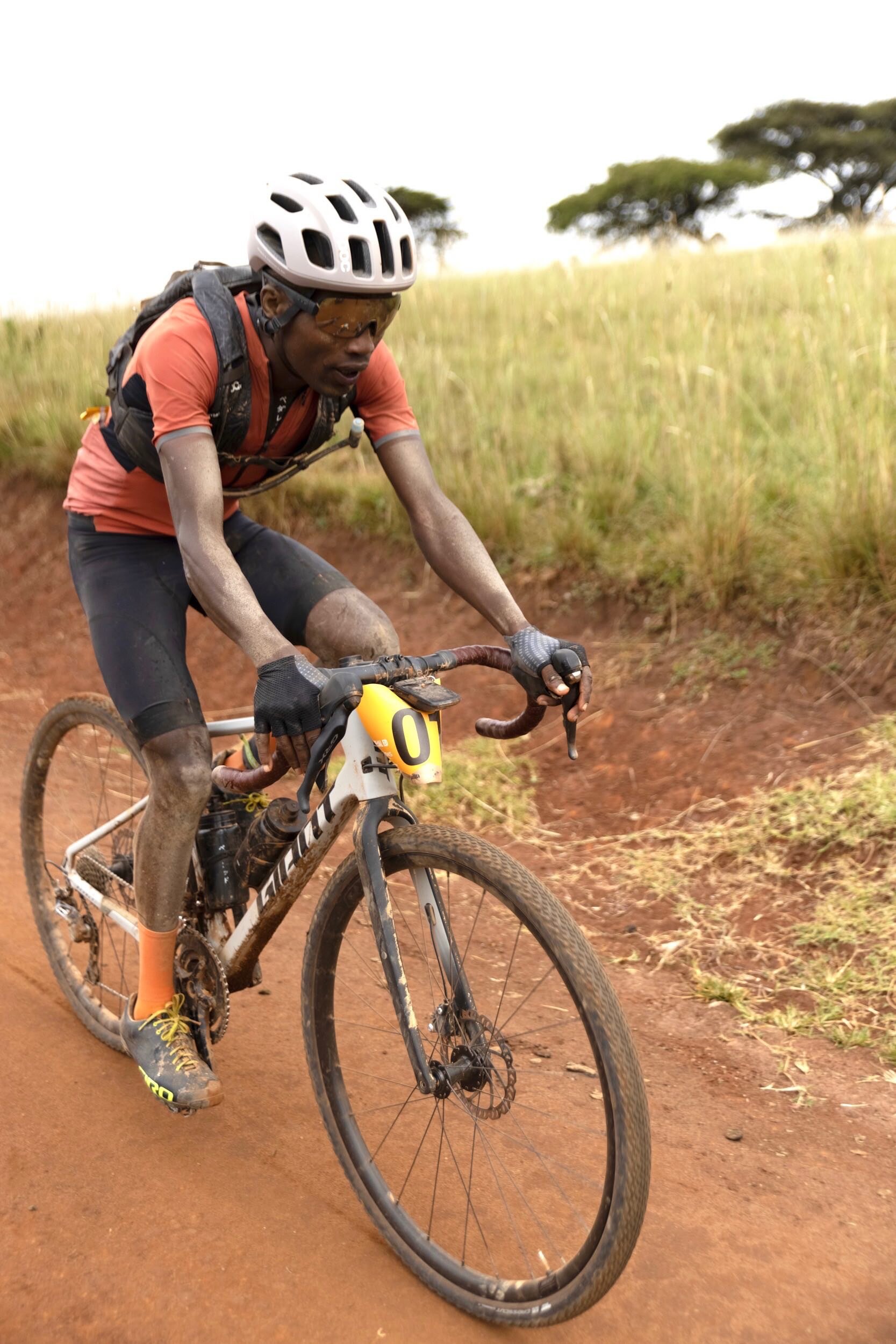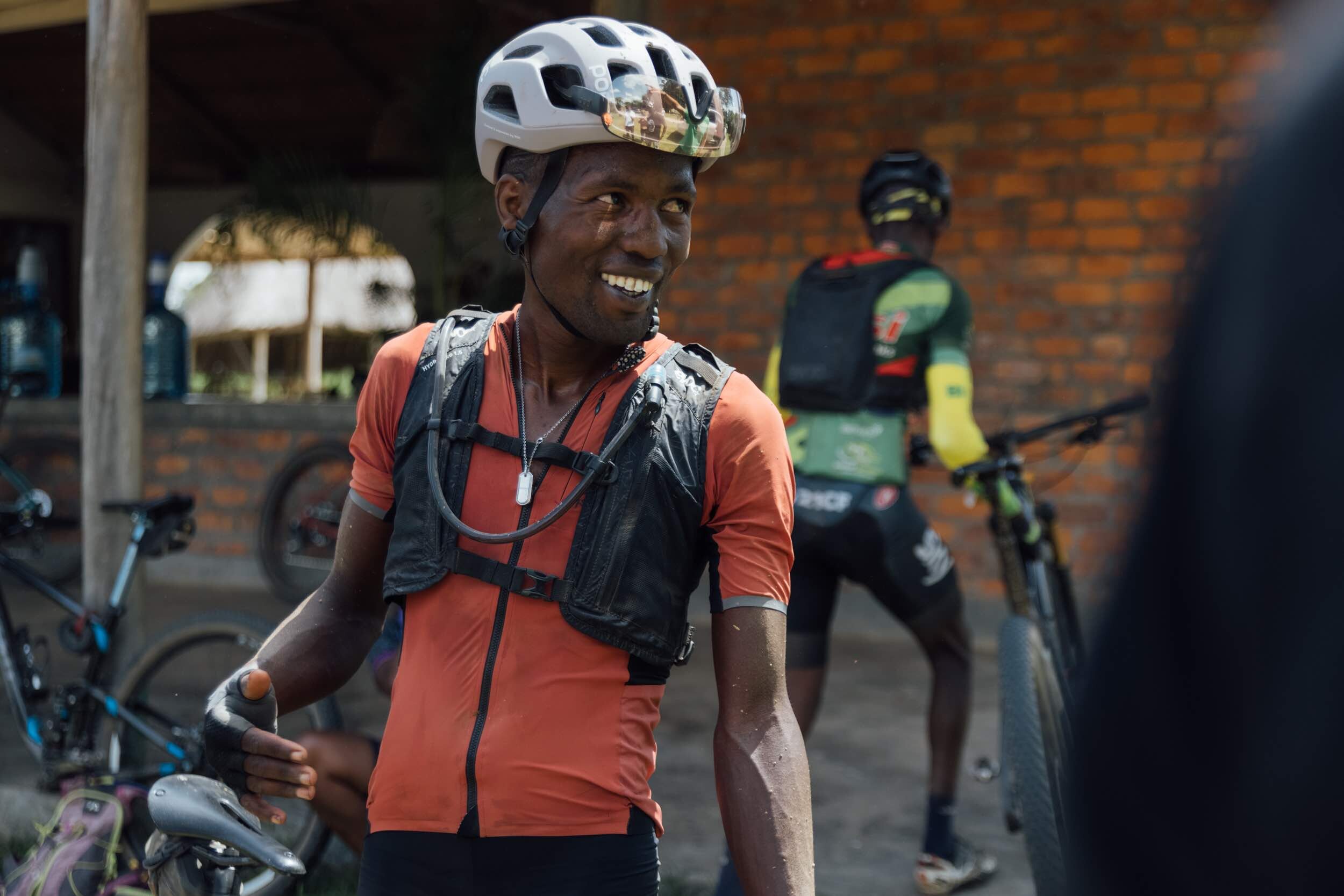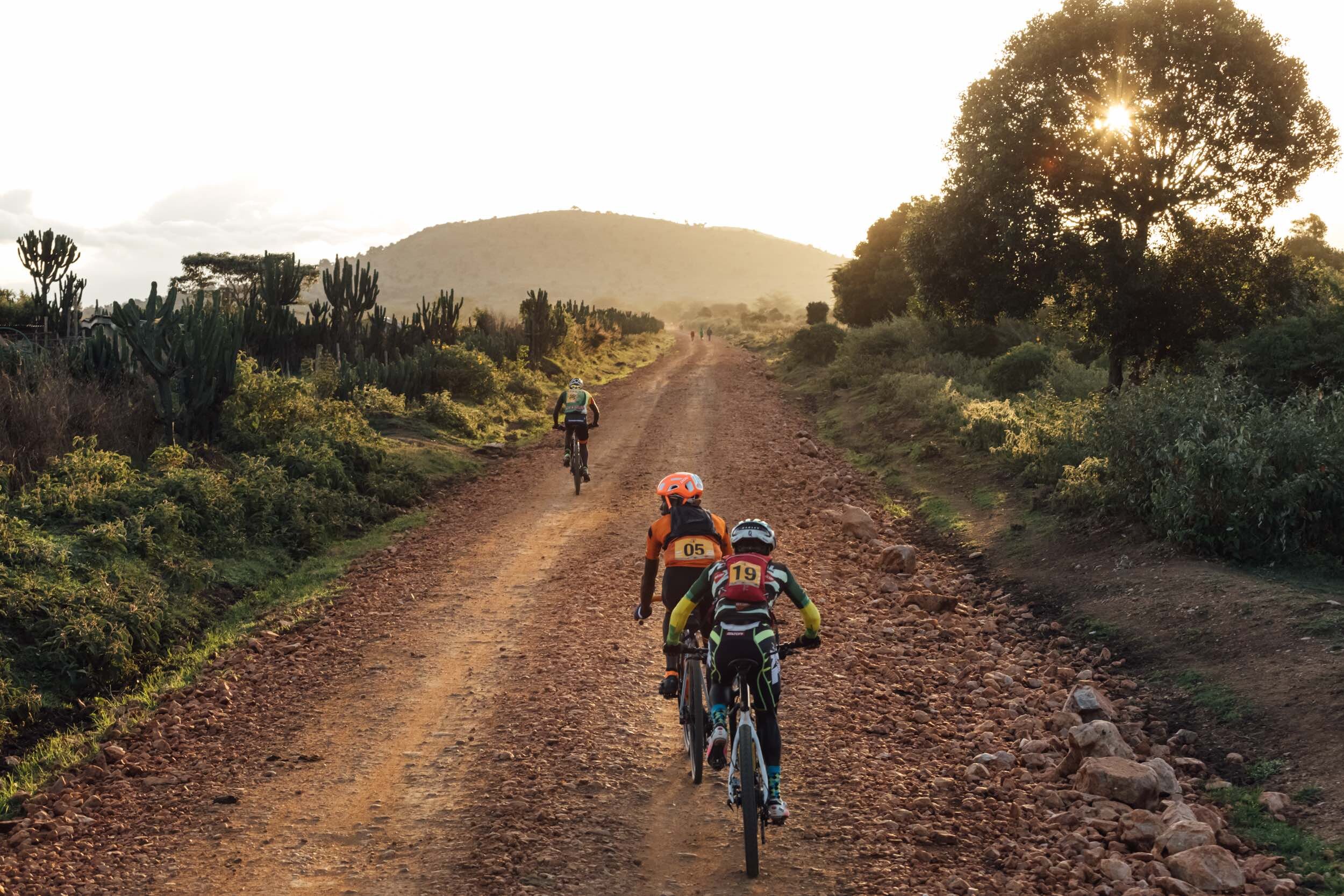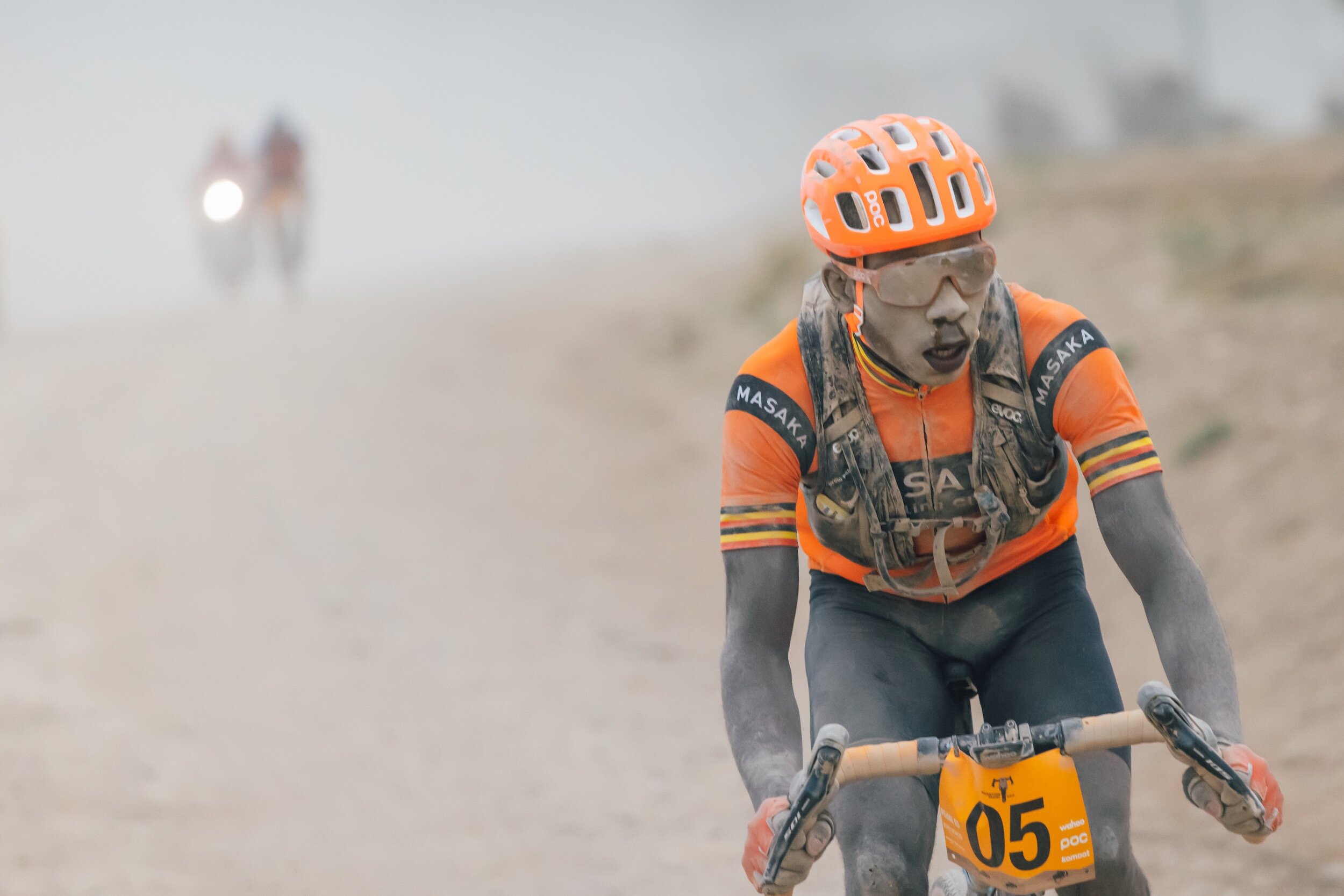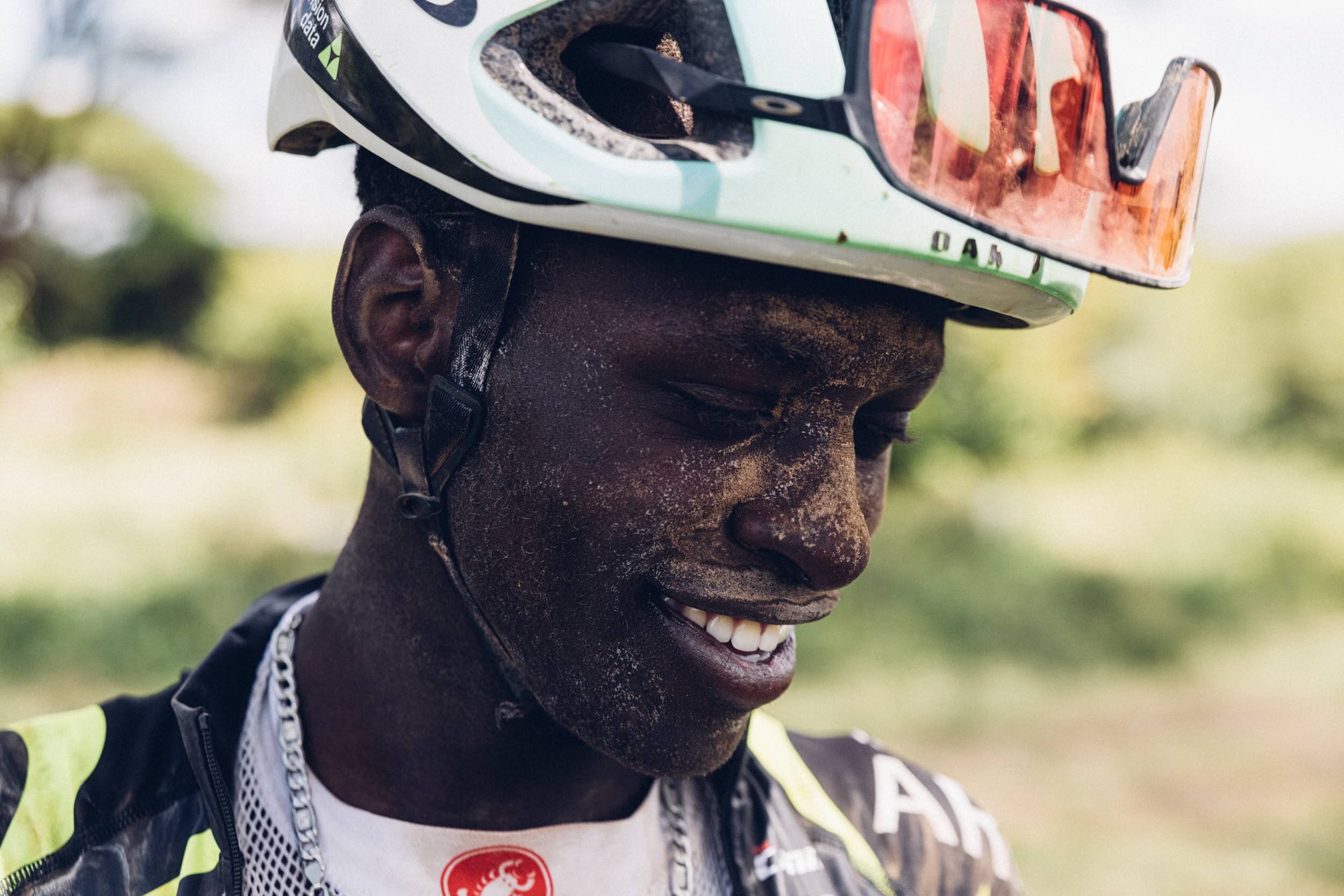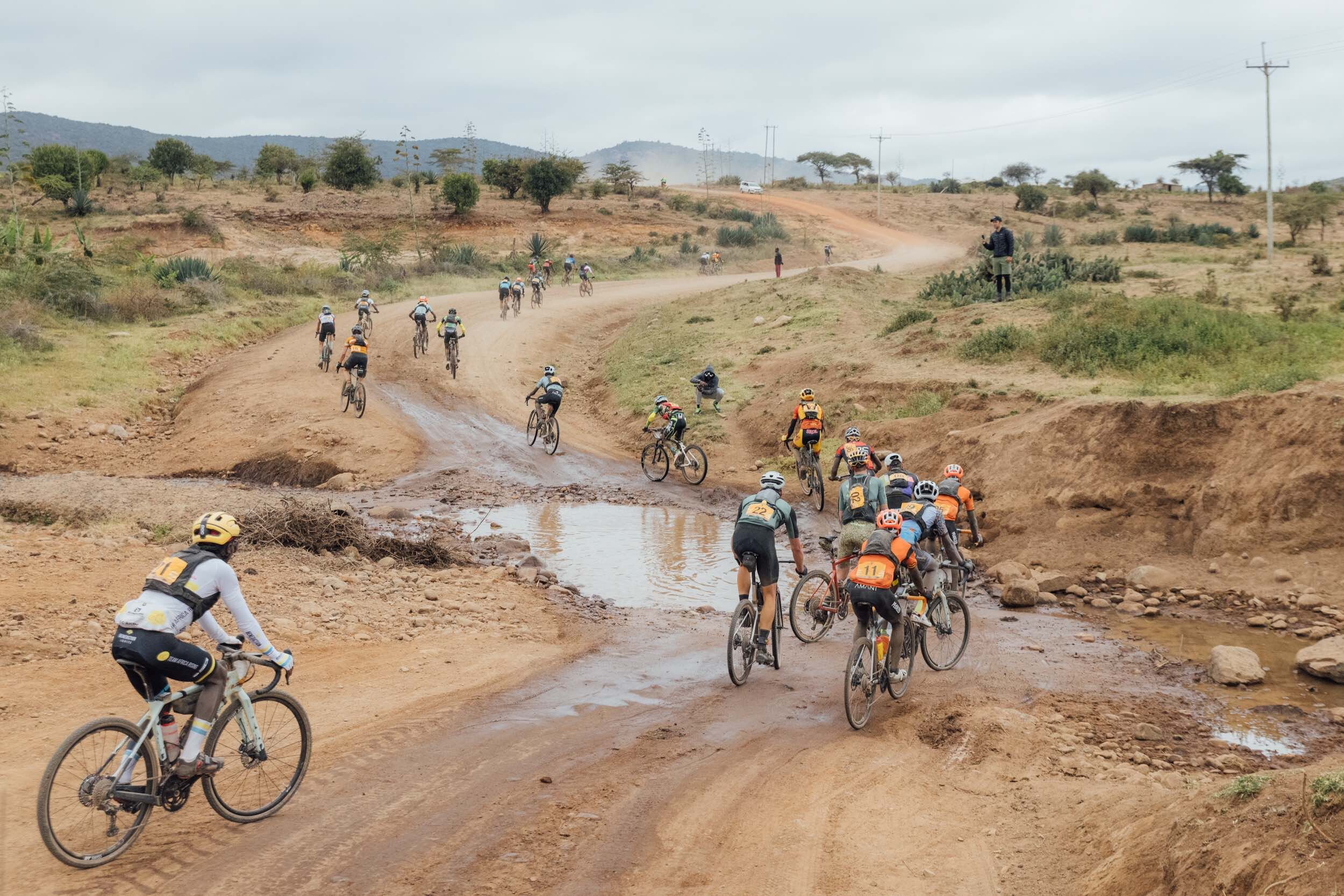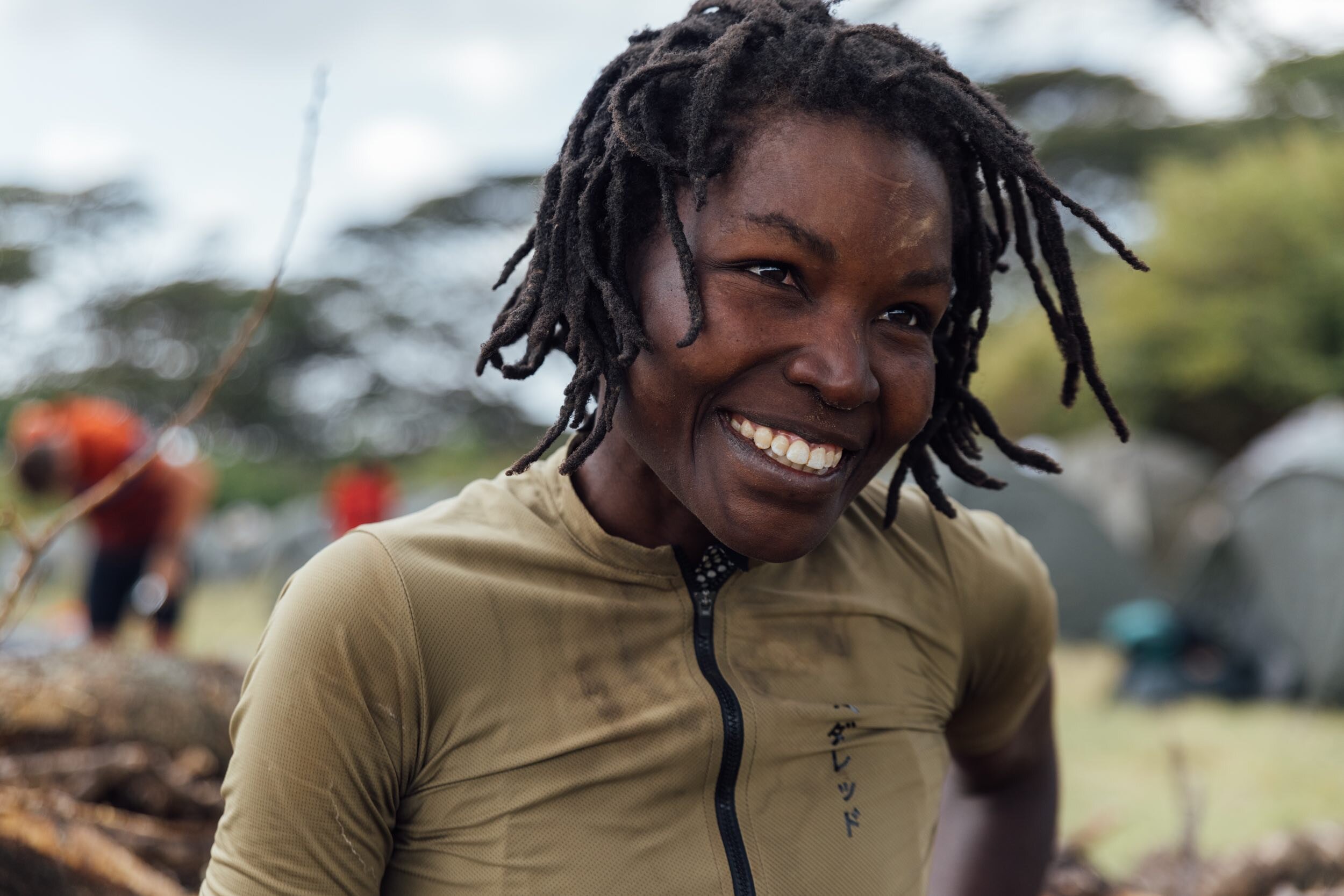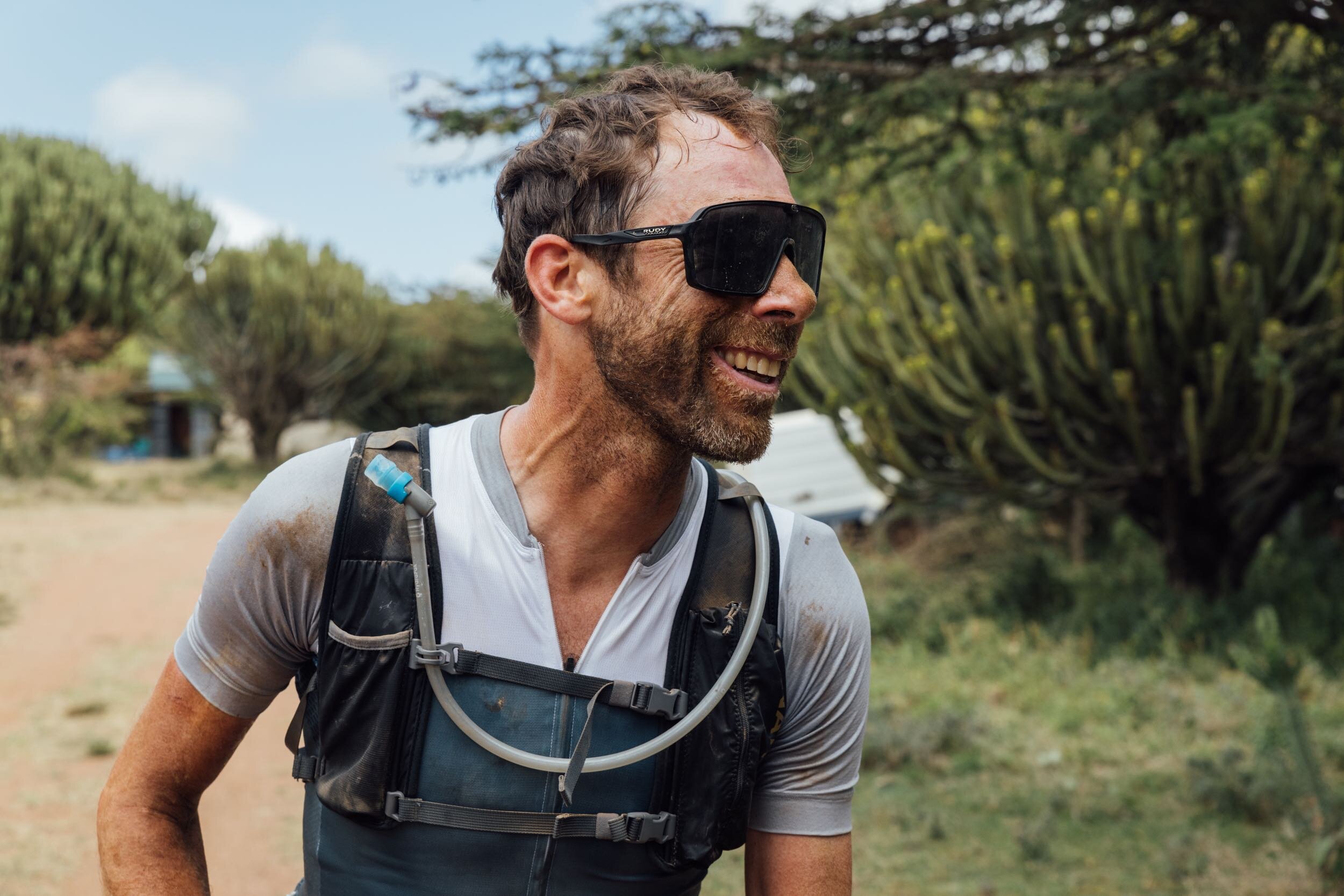Kenya’s gravel migration
East Africa’s top cyclists face considerable challenges breaking into elite international circuits. But a new gravel race in Kenya’s Maasai Mara has provided vital racing experience on home soil | Photography by Lian van Leeuwen
Sule Kangangi’s journey as a pro cyclist began many years ago in the town of Eldoret in Western Kenya. After dropping out of school because his parents couldn’t afford the fees, he found a job as a milk vendor, riding his single-speed Black Mamba bicycle from shop to shop, selling packets of milk. Doing his rounds one Sunday, a crowd cheering on riders in a local bike race caught his attention. He’d never seen bikes move so fast — to him they were just tools of his trade. Inspired by the competition and the joy of the crowd, he signed up to ride his bike in the next race in a town nearby. He won a trophy for finishing fifth, and has never looked back.
Left to right: Sule Kangangi racing on day two of the Migration Gravel Race in Kenya’s Maasai Mara; Sule at the finish line on the final day of the Migration Gravel Race
Sule has recently competed as a continental pro rider with BikeAid, after a stint with another continental team called the Kenyan Riders Downunder. The story of his first foray into competitive cycling isn’t unique among East Africa’s riders; involving small town races and cheap Chinese equipment. But few make it to the international stage. Kenya’s cycling culture is still in its infancy, and those who do aspire to turn pro, face considerable challenges — from unstable financing from local development teams, to visa issues, language barriers and cultural differences on the European circuit.
A recent and novel approach to overcoming these hurdles has led to the creation of East Africa’s first major gravel race. The inaugural four-stage Migration Gravel Race (MGR) took place from 23 – 26 June in Kenya’s Maasai Mara, with 59 competitors covering 650 kilometres across open plains, farmland and forested hills.
Sule approaching camp after a gruelling stage of the MGR
The event falls under the umbrella of the AMANI Project — a Dutch-African initiative founded by bike shop owner and lawyer, Mikel Delagrange. Through his work in East Africa, and conversations with the local cycling community, Mikel gained a clear understanding of the barriers preventing riders from breaking into the elite circuits. High on this list were the lack of racing opportunities in Europe, and the cultural challenges facing aspiring pros from having a fair chance at success on the continent.
The AMANI Project’s first initiative was aimed at confronting these barriers. They created an international cycling team composed of Dutch cyclists and talented riders from sister teams in Kenya, Uganda and Rwanda. The goal was to soften the pressure and culture shock for the African riders when they travelled to race in the Netherlands; however, their first season last summer was scrapped when the pandemic hit. For the cyclists in East Africa, a solution was needed closer to home.
This led to AMANI’s second initiative, the #RideOnline campaign. With their partners, Team Africa Rising and Wahoo, they outfitted three sister team clubhouses in Kenya, Rwanda and Uganda with e-trainers, and launched the Team Amani X Africa Rising Intercontinental Series event on Zwift. This has enabled the East African riders to regularly race and network with riders in the Netherlands, online.
And then there was the Migration Gravel Race itself; another local initiative stemming from the pandemic. For Mikel and the rest of the race organisers, the MGR was seen as a way of providing valuable race experience for promising East African cyclists, against top international riders. Beyond its unique setting in the wilds of the Maasai Mara, it was primarily created to be challenging and competitive, and to attract some of the best gravel riders around. Alongside a strong field of cyclists from Rwanda, Uganda and Kenya — including Sule — were gravel specialists, and former World Tour pros, Ian Boswell and Laurens ten Dam.
Navigating winding gravel roads across the Maasai Mara
The Migration Gravel Race’s name is derived from the migration of hundreds of thousands of wildebeest through the Mara landscape between July and September each year. Normally, at this time of year, the Mara would be teeming with tourists, but because of Covid, the tourist industry has taken a significant hit. So another benefit of the MGR has been the involvement of local Maasai communities. The organisers were keen to ensure that the Maasai were key stakeholders in the race, acting as motorbike drivers, suppliers, cooks and camp hosts.
Clockwise from top left: An early morning start for the riders; Kato Paul of Uganda’s Masaka Cycling Club covered in dust; Four-time Ugandan Junior National Champ, Jordan Schleck Ssekanwagi; A river crossing in the Mara
I travelled to the Mara for the final stage of the race — a 162 kilometre stretch across wildlife-rich plains and scattered farms, with a daunting climb up the towering Oloololo Escarpment. Launching an early attack, Ian Boswell peeled away from Sule in the chasing pack, and won the stage with 10 minutes to spare.
But the East African cyclists held their own against the visitors. Although Laurens ten Dam won the event overall, Sule wasn’t far off in second, and another Kenyan, Kenneth Karaya, completed the podium in third. There was a Kenyan winner in the women’s race, too, with Nancy Akinyi finishing eight minutes ahead of American, Betsy Welch.
Speaking after the race, Sule had plenty of good things to say about his fellow African competitors.
‘I think they did really well. There was no messing around for four days; we all focused on racing. These guys we were up against, they’re not just any other riders. Slowly by slowly, I’m sure gravel racing here will take off.’
Ten Dam also saw the value of racing in East Africa.
‘If you get two guys to Europe, you only teach two guys something. But if you race here with four or five good Europeans, you teach 30 guys at once. I’m a retired pro, so I’m not at the level of the Tour de France anymore, but at least they see the level they have to get to. That’s the benefit of this race, and it would be good to have more races like it across Africa.’
Left to right: Nancy Akinyi, winner of the women’s MGR; Laurens ten Dam, pro gravel racer
The MGR is already part of a new gravel racing series in Kenya, which Sule has helped to organise. And its success may also lead to the creation of an East African gravel racing team under the AMANI banner.
For years, the focus for East Africa’s riders has been racing at the highest level on the road. But at the MGR, they’ve shown that they can compete with the very best off the tarmac, too.
This article was first featured in Volume Five of Wilder Magazine, which is available to buy on our online shop.
You can also view the 650 km race route on komoot below, which was mapped by Laurens ten Dam.

